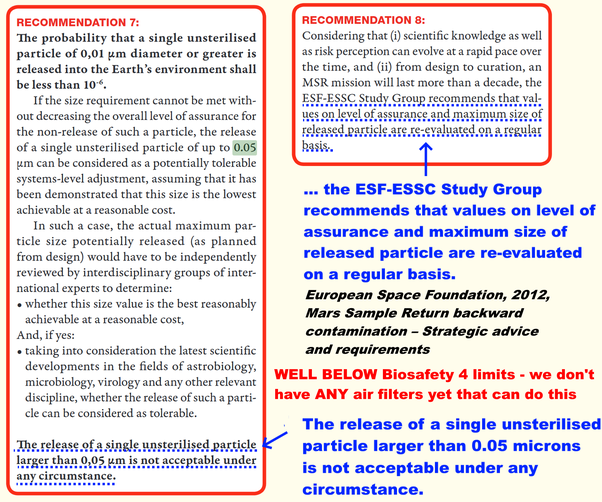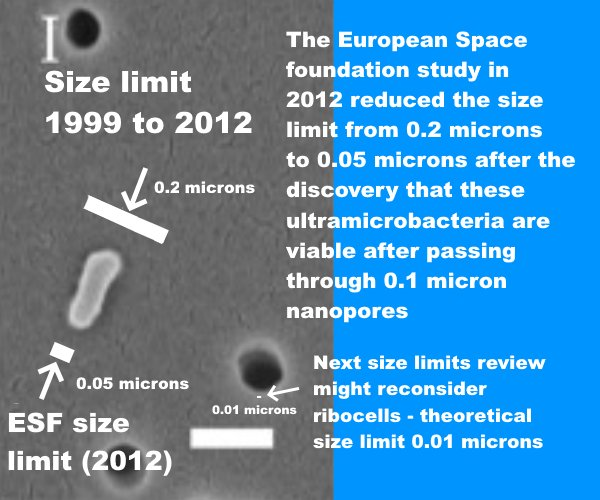DRAFT: Open letter to NASA | Response to final PEIS | Fails NEPA requirements | Main points in open letter in more depth | Finding an inspiring future | Executive summary of preprint | Low risk like house fires and smoke detectors | About me | DRAFT: Endorsements by experts | Why this needs an open letter with endorsements | Call to NASA to defer or withdraw EIS | Letters | BOOK: Preprint to submit to academic publishers
Author: Robert Walker, contact email robert@robertinventor.com
Letter to NASA's CEO of planetary protection
NOTE: I got no reply to this letter. I don't know if Dr Alvin Smith recieved it. I now know I should have contacted the point of contact listed at the head of the PEIS, Steve Slaten, NASA's NEPA expert for JPL
So I'll be contacting him instead about the PEIS.
Dear Dr. Alvin L. Smith, II
[My email to NASA's CEO of planetary protection on December 18 just before the end of the second round of public comments, with no reply]
I first tried an email to James Bernardini as planetary protection officer but it didn't go through.
What I want to know is why NASA's draft EIS doesn't take account of the European Space Foundation study in 2012 which reduced the size limit for the smallest cell to contain to 0.05 microns. This is well beyond the capabilities of a BSL-4 facility. Indeed I can't find any air filters that achieve it though I found one paper that can achieve containment in water under high pressure in carbon nanotubes loaded with silver.
I posted about it to the public comments in May and got no reply.
The ESF study in 2012 is the most recent major study on planetary protection for a Mars sample return. The reasons it gave made sense, to contain ultramicrobacteria which pass through 0.1 micron nanopores. I have spent the last two years writing a paper on planetary protection for this very mission so I am familiar with the background literature.
I haven't found any criticism of it or any suggestion that its conclusions are not valid. Also it stresses the need for periodic review which is certainly needed a decade later.
This is a screenshot of its recommendations 7 and 8.

I'm baffled by the complete silence on this matter. If the draft EIS cited it and gave a reason for not using it then that would be different.
But by not citing it this means you are using research that is over a decade old. Indeed the 0.2 micron limit goes back to 1999. So it is over two decades old.
Meanwhile the size limits review might well reduce it below 0.05 microns. For instance if the new research into ribocells makes them more plausible it would reduce it to 0.01 microns.

I don't know of any reason why NASA wouldn't follow this recommendation.
Also why do you not consider a pre-sterilized sample return? It would achieve virtually the same science return and keep Earth 100% safe. You wouldn't need to do safety testing as it would be already safe.
If the safety testing is meant for future missions to Mars it is nowhere near adequate as the permitted levels of biosignatures mean that all the samples will go to critical review and hold and will never be proven safe as far as I can tell. Guaranteed to find uncultivable microbes with fragments of RNA not closely related to any known terrestrial microbes although they actually do come from Earth. There won't be any way to distinguish martian from terrestrial microbes.
Also given the high levels of contamination from an astrobiological point of view (though low for geologists) I'd like to suggest bonus samples of dirt, dust and atmosphere collected in a sterile container by the ESA fetch rover and returned to a safe orbit above GEO to study telerobotically with life detection instruments that work end to end including sample preparation as they are designed to be sent to search in situ on Mars. Also they could send hundreds of them to above GEO in one payload from the Ariane 5 which can deliver over 7 tons up there in one go.
The astrobiologists can study it remotely from Earth with almost zero latency. Then make their own decisions about whether to continue to study it there or sterilize it and return it - or if it is completely safe maybe an unsterilized return but they would need a thorough understanding to do that. There's another big advantage of doing it this way, far easier to keep the samples free of terrestrial forwards contamination than in a lab on Earth.
The geological samples could all be pre-sterilized and returned to Earth.
I see no future in human quarantine until we know what is in the samples. Human quarantine can't protect Earth from diseases of crops such as the mold that killed two zinnia plants in the ISS or symptomless carriers of an opportunistic human pathogen that can kill some people, similarly to typhoid Mary, or radically different biology such as a natural equivalent of Hachimoji DNA or independently evolved mirror life. There's at least a possibility of independent life on Mars and what matters for the natural contamination principle is if there is any life on Mars that can't get here on meteorites - the metaphorical starlings rather than the barn swallows.
I talk about all this in my blog post here where I also link to an academic preprint analysing the EIsS and an annotated copy of it.
If there is anything I'm missing here, or anything I got wrong please say.
The public have a direct interest in this, as it's our home that would be affected on the remote chance of large scale effects.
I think the chance of life returned in this mission is probably low but it is hard to evaluate as some astrobiologists look at potential for biofilms in microhabitats setting up homes in hostile environments or transported in the dust and see potential for life almost everywhere, while others while they still see potential for surface habitats are skeptical life could have got to them or remains there after billions of years.
But the precautionary principle is an ethical / moral / legal decision for the public not a scientific decision.
And then if NASA return it to a BSL-4 due to NASA's high reputation that's likely to become the norm for China, INdia, Russia if they do an more Mars missions, UAE, anyone else who wants to get a sample back from Mars and eventually one of them may return life and if a BSL-4 is insufficient then it is likely released so we have little protection.
I see it as like building a house without smoke alarms. We need to get this right. If we can keep Earth 100% safe, why not do it in a 100% safe way?
At least that has to be considered as an option in the EIS.
I go into this more in my blog post and preprint.
It will be an interesting mission and if what I identified here are indeed issues, then there's great hope we can transform it into a safe one of extraordinary interest, no reason not to be 100% safe.
If I'm missing anything again please say thanks.
Best wishes
Robert Walker
DRAFT: Open letter to NASA | Response to final PEIS | Fails NEPA requirements | Main points in open letter in more depth | Finding an inspiring future | Executive summary of preprint | Low risk like house fires and smoke detectors | About me | DRAFT: Endorsements by experts | Why this needs an open letter with endorsement | Call to NASA to defer or withdraw EIS | Letters | BOOK: Preprint to submit to academic publishers
Author: Robert Walker, contact email robert@robertinventor.com